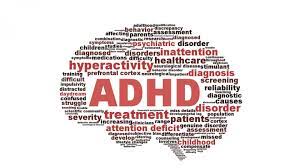What Is ADHD?
Consideration deficiency/hyperactivity problem (ADHD) is quite possibly the most widely recognized mental disorder influencing kids. ADHD additionally influences numerous grown-ups. Side effects of ADHD incorporate absentmindedness (not having the option to stay on track), hyperactivity (abundance development that isn’t fitting to the setting) and impulsivity (rushed demonstrations that happen at the time without thought).
An expected 8.4% of kids and 2.5% of grown-ups have ADHD.1,2 ADHD is regularly first recognized in school-matured youngsters when it prompts interruption in the homeroom or issues with homework. It is more normal among young men than young ladies.
Side effects and Diagnosis:
Numerous ADHD side effects, for example, high action levels, trouble staying still for significant stretches of time and restricted capacities to focus, are normal to little youngsters overall. The distinction in youngsters with ADHD is that their hyperactivity and distractedness are observably more prominent than anticipated for their age and cause trouble and additionally issues working at home, at school or with companions.
ADHD is analyzed as one of three kinds: negligent sort, hyperactive/indiscreet sort or joined sort. An analysis depends on the manifestations that have happened in the course of recent months.
Unmindful sort – six (or five for individuals more than 17 years) of the accompanying indications happen as often as possible:
- Doesn’t give close consideration to subtleties or commits indiscreet errors in everyday schedule undertakings.
- Has issues keeping fixed on undertakings or exercises, for example, during talks, discussions or long perusing.
- Doesn’t appear to listen when addressed (i.e., is by all accounts somewhere else).
- Doesn’t adhere to through on guidelines and doesn’t finish homework, errands or occupation obligations (may begin undertakings yet rapidly loses center).
- Has issues sorting out assignments and work (for example, doesn’t oversee time well; has muddled, complicated work; misses cutoff times).
- Keeps away from or detests undertakings that require supported mental exertion, like planning reports and finishing structures.
- Frequently loses things required for undertakings or day to day existence, for example, school papers, books, keys, wallet, mobile phone and eyeglasses.
- Is quickly flustered.
- Neglects every day assignments, like finishing tasks and getting things done. More established adolescents and grown-ups may neglect to return calls, cover bills and keep arrangements.
Hyperactive/imprudent sort – six (or five for individuals north of 17 years) of the accompanying indications happen often:
- Squirms with or taps hands or feet, or wriggles in seat.
- Not ready to remain situated (in study hall, working environment).
- Runs about or climbs where it is improper.
- Incapable to play or do recreation exercises unobtrusively.
- Continuously “in a hurry,” as though determined by an engine.
- Goes on and on.
- Exclaims a reply before an inquiry has been done (for example might complete individuals’ sentences, can hardly wait to talk in discussions).
- Experiences issues holding up their turn, for example, while holding up in line.
- Hinders or interrupts others (for example, cuts into discussions, games or exercises, or starts utilizing others’ things without authorization). More established adolescents and grown-ups may assume control over the thing others are doing.
There is no lab test to analyze ADHD. Analysis includes gathering data from guardians, educators and others, finishing up agendas and having a clinical assessment (counting vision and hearing screening) to preclude other clinical issues. The manifestations are not the consequence of individual being disobedient or threatening or incapable to comprehend an undertaking or guidelines.
The Causes of ADHD:
Researchers have not yet distinguished the particular reasons for ADHD. There is proof that hereditary qualities add to ADHD. For instance, three out of four youngsters with ADHD have a relative with the issue. Different variables that might add to the improvement of ADHD incorporate being conceived rashly, cerebrum injury and the mother smoking, utilizing liquor or having outrageous pressure during pregnancy.
ADHD and the School-Aged Child:
Educators and school staff can furnish guardians and specialists with data to assist with assessing conduct and learning issues, and can help with social preparing. In any case, school staff can’t analyze ADHD, settle on choices about treatment or necessitate that an understudy take prescription to go to class. Just guardians and watchmen can settle on those choices with the youngster’s doctor.
Understudies whose ADHD hinders their learning might fit the bill for a specialized curriculum under the Individuals with Disabilities Education Act or for a Section 504 arrangement (for youngsters who don’t need custom curriculum) under the Rehabilitation Act of 1973. Kids with ADHD can profit from concentrate on abilities guidance, changes to the study hall arrangement, elective showing strategies and an altered educational program.
ADHD and Adults:
Numerous grown-ups with ADHD don’t understand they have the problem. An exhaustive assessment normally incorporates a survey of past and current side effects, a clinical test and history, and utilization of grown-up rating scales or agendas. Grown-ups with ADHD are treated with prescription, psychotherapy or a blend. Conduct the executives methodologies, for example, ways of limiting interruptions and increment design and association, and including close relatives can likewise be useful.
Related Conditions:
- Mental imbalance range problem
- Problematic, drive control and lead issues
- Social correspondence issue
- Explicit learning issue

